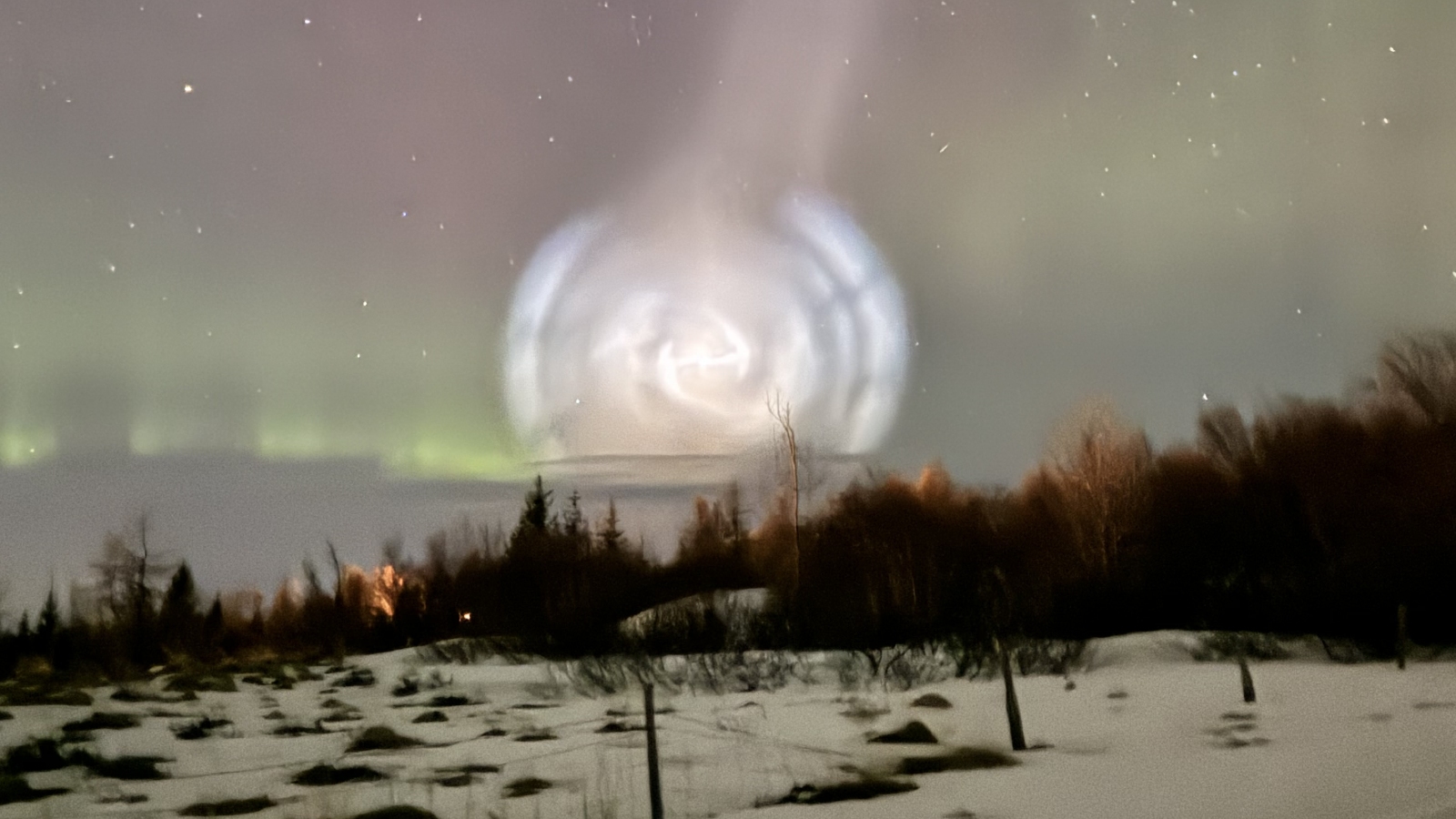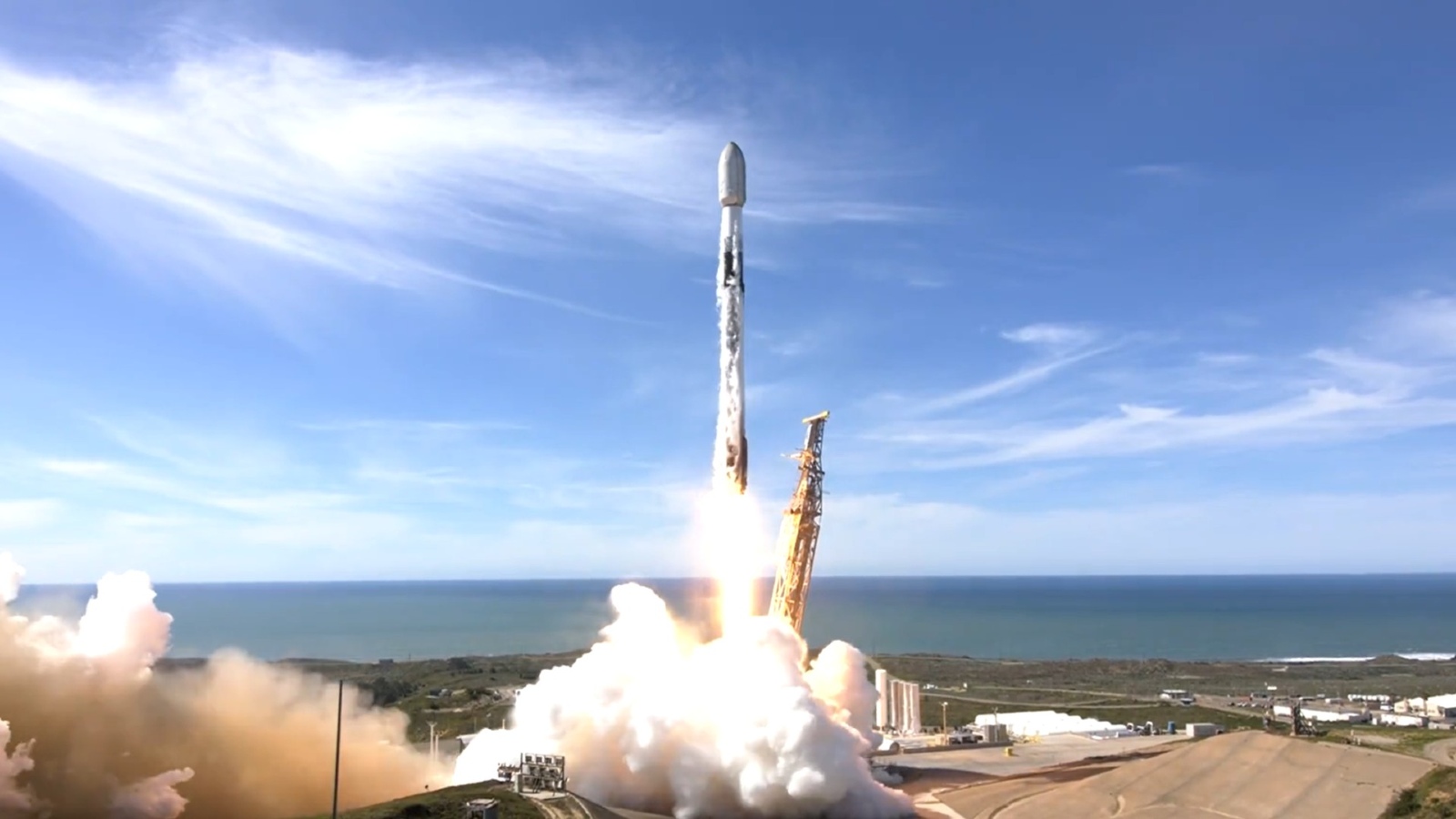Dying SpaceX rocket creates glowing, galaxy-like spiral in the middle of the Northern Lights
A large swirl of white light that temporarily outshone vibrant auroras in the Arctic last week was triggered by the death throes of a SpaceX rocket that deployed more than 50 satellites into space.

A massive swirl of bright white light seemingly appeared from out of nowhere in the night sky above the Arctic last week, briefly upstaging a vibrant aurora display that spanned thousands of miles.
The ethereal, galaxy-shaped light show was caused by an illuminated cloud of frozen fuel that was dumped in space by a SpaceX rocket, which released dozens of satellites into low-Earth orbit.
Astronomers call this rare phenomenon a "SpaceX spiral," and expect them to become a much more common sight in the future.
On March 4, at 5:05 p.m. EST, SpaceX launched a Falcon 9 rocket from the Vandenberg Space Force Base in California. The rocket was part of the Transport-10 mission and was carrying 53 satellites belonging to several different commercial space companies, which were successfully released into orbit around our planet around two hours after launch, Live Science's sister site Space.com reported.
Shortly after payload deployment, the rocket's second stage, which had already separated from the rocket's reusable first-stage booster, began to de-orbit and later burned up in the atmosphere above the Barents Sea in the Arctic. During this maneuver, the spinning rocket dumped its remaining fuel into space, which then froze into tiny crystals that spread out in a spiral shape and reflected sunlight to Earth.
Related: Ethereal halo of light around full moon spotted during recent SpaceX rocket launch
Aurora photographer Shang Yang captured a stunning photo of the illuminated swirl near the town of Akureyri in Iceland at around 1 a.m. local time on March 5. "It looked otherworldly against the Northern Lights," Shang told Spaceweather.com. The spectacle lasted for around 10 minutes before dissipating.
Get the world’s most fascinating discoveries delivered straight to your inbox.
The whirlpool of light was also captured during an aurora livestream in Iceland, and was photographed in Finland and in Norway, where it had a striking blue color.
SpaceX spirals are rare. But they are becoming more common as the number of SpaceX launches increases.
In April 2023, a stunning blue SpaceX spiral photobombed an aurora display above Alaska. The phenomenon has also been spotted twice by a camera attached to the Subaru Telescope on Hawaii's Mauna Kea: first in April 2022 and again in January last year.
The spirals do not appear after every launch, for several reasons — including the spin rate of the booster, time of day and the orientation of the rocket compared to Earth and the sun. This makes it hard to tell when they will be visible.
However, astrophotographer Olivier Staiger correctly predicted that the Transport-10 mission would produce a spiral above the Arctic, Spaceweather.com reported. He realized that the rocket's varied payload would require it to spin more than normal during deployment, which would mean it would still be spinning fast when it dumped its fuel.
Staiger also predicts that there will be another strong SpaceX spiral above Iceland and other parts of the Arctic when the Transporter-12 mission launches in October this year.

Harry is a U.K.-based senior staff writer at Live Science. He studied marine biology at the University of Exeter before training to become a journalist. He covers a wide range of topics including space exploration, planetary science, space weather, climate change, animal behavior and paleontology. His recent work on the solar maximum won "best space submission" at the 2024 Aerospace Media Awards and was shortlisted in the "top scoop" category at the NCTJ Awards for Excellence in 2023. He also writes Live Science's weekly Earth from space series.



